Effect of trapezoidal collars as a scour countermeasure around wing-wall abutments
Pym Khosrvini,Amir Mlekpour*,Ali Hosseinzdehdlir,Dvod Frsdizdeh
aCollege of Agriculture,University of Kurdistan,Sanandaj 66177,Iran
bCollege of Agricultural Sciences,University of Guilan,Rasht 41996,Iran
cCollege of Agriculture,University of Tabriz,Tabriz 51666,Iran
1.Introduction
The construction of a bridge across a river changes the flow pattern,and vortex flow occurs around the abutments and piers.In the case of an abutment,the down flow on the upstream side of the structure is associated with the wake and secondary vortices downstream.This process causes scour development around the abutments and may lead to structural failure.Mechanisms of scour development around abutments and piers have been studied by many researchers(Raudkivi,1990;Coleman et al.,2003;Barbhuiya and Dey,2004;Kumcu et al.,2007,2014;Heidarpour et al.,2010;Masjedi et al.,2010).The various scour countermeasures can be classified into two main groups:bed-hardening methods and flow-altering methods.Riprap protection is an example of the first group,whereas collars,parallel walls,and vanes belong to the second group(Chiew,1992).Primary studies of scour development around bridge piers with collars have been conducted by Ettema(1980).Dargahi(1990a)applied both symmetrical and asymmetrical collars around a bridge pier and found that the symmetry and shape negligibly affect the formation of down flow.Dargahi(1990b)concluded that when the thickness of a collar is increased,its efficiency in mitigating scour development decreases noticeably.Chiew(1992)conducted a series of experiments on a single cylindrical pier and concluded that a combination of collars and slots can be an efficient alternative to riprap protection.Kumar et al.(1999)presented an equation to predict the scour depth in the presence of a collar.They observed that larger collars placed close to the bed level are more effective than those at other elevations.In addition,the temporal scour development around rectangular and circular piers with collars has been investigated by some researchers(Mashahir and Zarrati,2002;Mashahir et al.,2004).They have concluded that a collar can more effectively slow down the scour development rate than a wide footing.Moreover,a collar placed at the bed level that is three times larger in diameter than the pier can significantly reduce the scour depth.According to Alabi(2006),a collar can be installed perpendicular to the abutment at different elevations close to the bed level to efficiently mitigate the scouring.Izadnia and Heidarpour(2012)investigated the simultaneous application of cables and collars around a bridge pier and concluded that this is an efficient method of scour protection.Some researchers have focused on the application of collars as a scour countermeasure at bridge abutments.Kayaturk(2005)studied the effect of rectangular collars on the time-dependent scour development around a vertical-wall abutment.He found that the efficiency of a collar depends on its size and location.Li et al.(2005)used collars as a scour countermeasure around the abutment in a compound channel under clear-water conditions.They observed that the collar can protect the bridge abutment and postpone scour development.Gogus and Dogan(2010)applied various sediment sizes and used collars at different elevations.They concluded that the sediment size has a negligible effect on the optimum location of collars.Kumcu et al.(2014)applied various collar sizes at different elevations around a vertical-wall abutment.Using two sediment sizes,they determined an optimum location of collars for maximum scourreduction and concluded that the optimum location is not affected by sediment diameters.Alem et al.(2012)studied the effects of collar elevation and roughness on the scour reduction around a rectangular bridge abutment.They concluded that a rough collar can reduce the scour depth by 26.8%.Yilmaz(2014)investigated the application of collars as a scour countermeasure around spill-through abutments under clear-water conditions.He concluded that a collar can effectively reduce the scour depth around spill-through abutments.Wu et al.(2015)experimentally studied the local scour around bridge abutments underice-covered conditions and presented an empirical relationship to estimate the maximum scour depth.Mohammadpour et al.(2016)employed two techniques,the adaptive neuro fuzzy inference system(ANFIS)and artificial neural networks(ANNs),to accurately predict the temporal scour depth.They found that the root mean square error(RMSE)of the predicted results obtained with feed-forward back propagation(FFBP),which is an ANN technique,is the smallest among the applied methods.Ghazvinei et al.(2017)investigated the scour predictive formulas at a protruding abutment in a compound channel.They aimed to determine the maximum scour depth as an essential component of footing design.Despite the studies undertaken so far,there is still a need to conduct further studies to determine the protective role of collars around prevalent types of abutments,e.g.,wing-wall abutments.
In this study,collars were used to reduce the flow strength and consequently to mitigate the scour development around a wing-wall abutment.First,the scour development around the abutment was experimentally investigated without using any collar under clear-water conditions.Then,trapezoidal collars of different widths were applied to the wing-wall abutment and the temporal scour development around the abutment was experimentally studied.Finally,the performance of applied countermeasures in reducing the scour depth was evaluated.
2.Materials and methods
2.1.Maximum scour depth and equilibrium time
Generally,two main factors affect the scour development around a collar:the collar's size and its location.Applying this scour countermeasure,the flow field above and under the collar is divided into two separate regions.In the upper region,the collar acts as a barrier against the down flow and reduces the flow intensity towards the bed materials.Meanwhile,it reduces the size of vortices at lower elevations under the collar.
The equilibrium time is the time required to reach the equilibrium scour depth.The equilibrium scour depth is obtained when the time-averaged transport of bed materials into the scour hole equals those removed from it(Zhai,2010).In the case of an abutment without a collar,the most important factors that affect the scour development are flow depth(y),velocity(V),abutment length(La),and time(t).Eq.(1)presents the effective factors in time-dependent scour development:

wheredsmaxis the maximum scour depth at timet;Bcis the collar width;Bais the abutment width;Tcis the collar thickness;sis the slope of the channel;ρsis the density of sediment;ρ is the density of fluid;μ is the dynamic viscosity of fluid;gis the gravitational acceleration;d50is the median grain size;and σgis the geometric standard deviation derived from the sediment size distribution,and σg= (d84/d16)0.5,whered84is the particle diameter for which 84%of the sediment is finer,andd16is the particle diameter for which 16%of the sediment is finer.
Coleman et al.(2003)introduced a dimensionless parameterT*=teV/La,whereteis the equilibrium time,and presented the following relationships forLa/d50>60:

whereVcis the critical velocity.They also analyzed the temporal variations of scour depth at the abutment under clear water conditions and introducedKtto the equation presented by Melville(1992):

wheredsis the scour depth,anddseis the equilibrium scour depth.Ballio and Orsi(2001)analyzed the scour development around abutments in a canal,with lengths of 5 and 10 cm,and widths ranging from 0.2 to 1 m.Consideringd50=5 mm,the following equation was derived:

2.2.Experimental setup
The tests were conducted in a flume,6 m long,80 cm wide,and 50 cm deep,with a rectangular cross-section.The flume was equipped with false floors and a recess part filled with sand,and its bottom slope angle was set to zero.The recess part was 80 cm wide and 15 cm deep.A wing-wall abutment withBa/La=3 was installed in the recess part.In this study,abutments with lengths of 6,8,and 10 cm and collars with widths of 2,4,6,and 8 cm were used.According to Alabi(2006),a collar that is thinner than 5 mm has no adverse effect on scour development.Therefore,a 1 mm-thick collar was used in this study.The sand bed was leveled by a scraper device.Then,the flume was carefully filled with water so that the scour development was prevented before the tests.During the experiments,the flow rate was measured using a calibrated weir,which was located at the end of the flume.
Fig.1 presents a schematic view of the laboratory setup.According to previous studies by Dongol(1994)and Dey et al.(1995),the maximum scour depth occurs forLa/d50>40 and σg<1.4.Therefore,two series of experiments were carried out using cohesive sandy soil withd50=0.4 mm and a specific gravity ofSg=2.67 to meet the above-mentioned criteria for the maximum scour depth.The first series of experiments was conducted without collars.Then,trapezoidal collars with four different widths were employed in the second series of the tests.All the tests were conducted withV/Vc=0.9 to meet the clear-water conditions.The collars were placed at the bed level and the flow was controlled within the subcritical regime.The ranges of Reynolds and Froude numbers were kept from 6.8×104to 11.2×104and from 0.14 to 0.20,respectively.A series of parameters,including the flow rate, flow depth,shear velocity,and scour depth,were measured in each experiment.The flow rate varied from 17 to 34 L/s in order to maintain ay/Larange from 2.1 to 2.8;this guaranteed that the flow depth had no in fluence on the scour depth,in accordance with the criterion ofy/La>1 presented by Coleman et al.(2003).
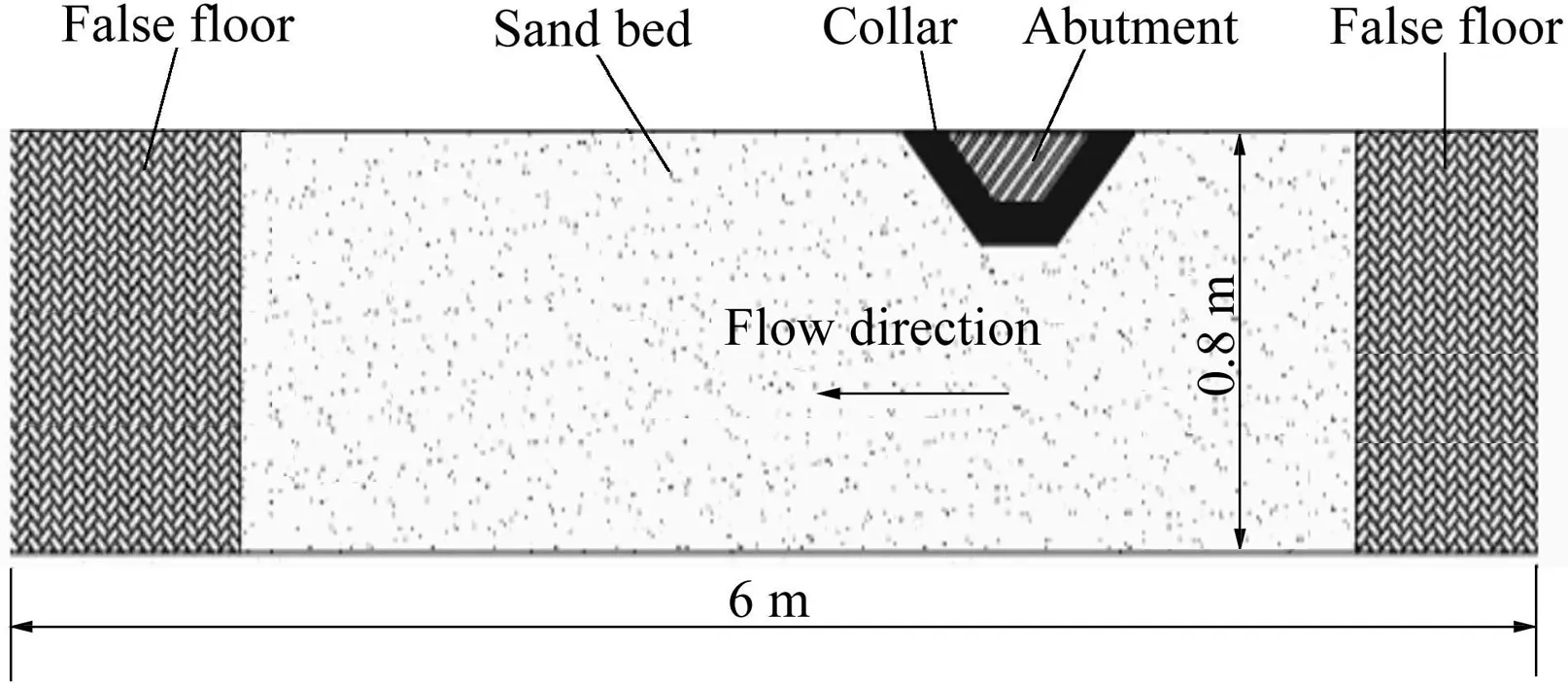
Fig.1.Plan view of abutment installed in laboratory setup.
Fig.2 illustrates the scour holes around the abutment with and without a collar.Over the first 10 min of each experiment,the measurements of scoursizes were takenevery minute.Then,the measurements were recorded every5 minin the first hour.In the second and third hours,the measurements were taken every 10 and 20 min,respectively.From the fourth hour up to the end of each experiment,a time interval of 30 min was adopted.Moreover,a point gaugewas used(on a grid with a mesh size of 2cm×2cm)to measurethed imensions of the scourhole.Fig.3 demonstrates the dimensions of the scour hole in a schematic view,including its upstream length(a)and width(c).
3.Results and discussion
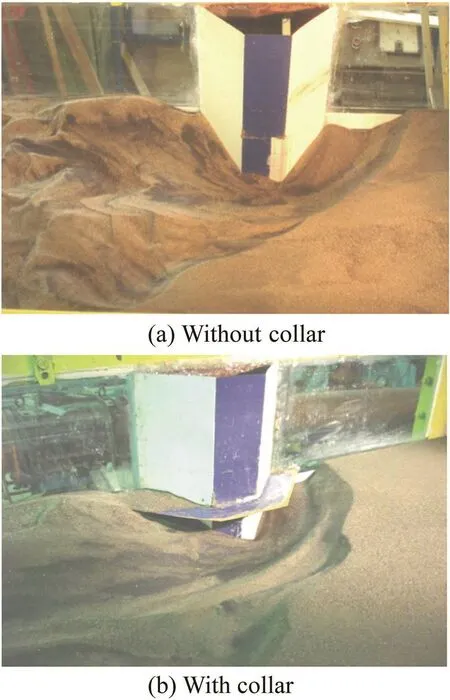
Fig.2.Scour holes around wing-wall abutment with and without collar.
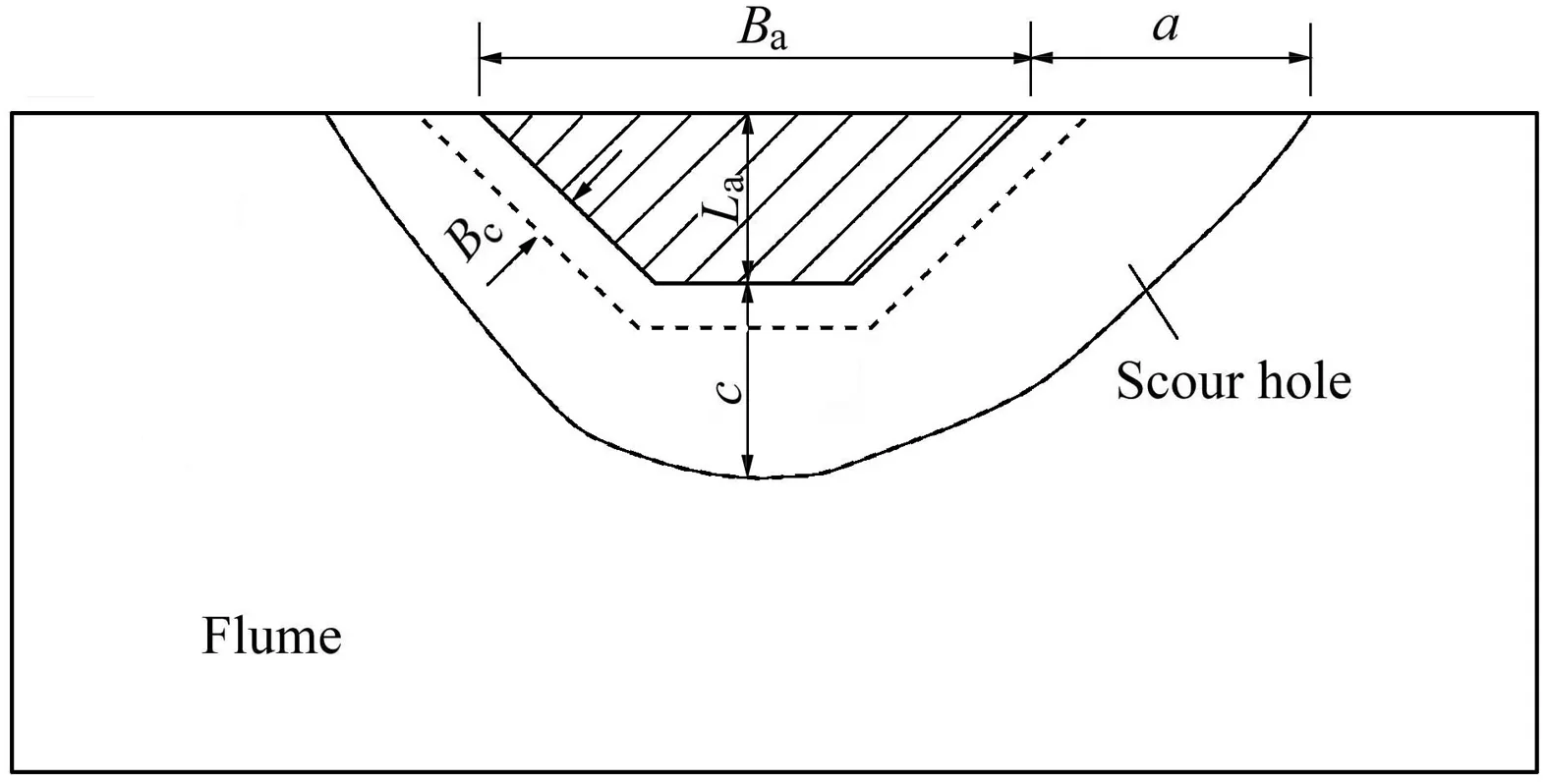
Fig.3.Dimensions of scour hole in plan view.
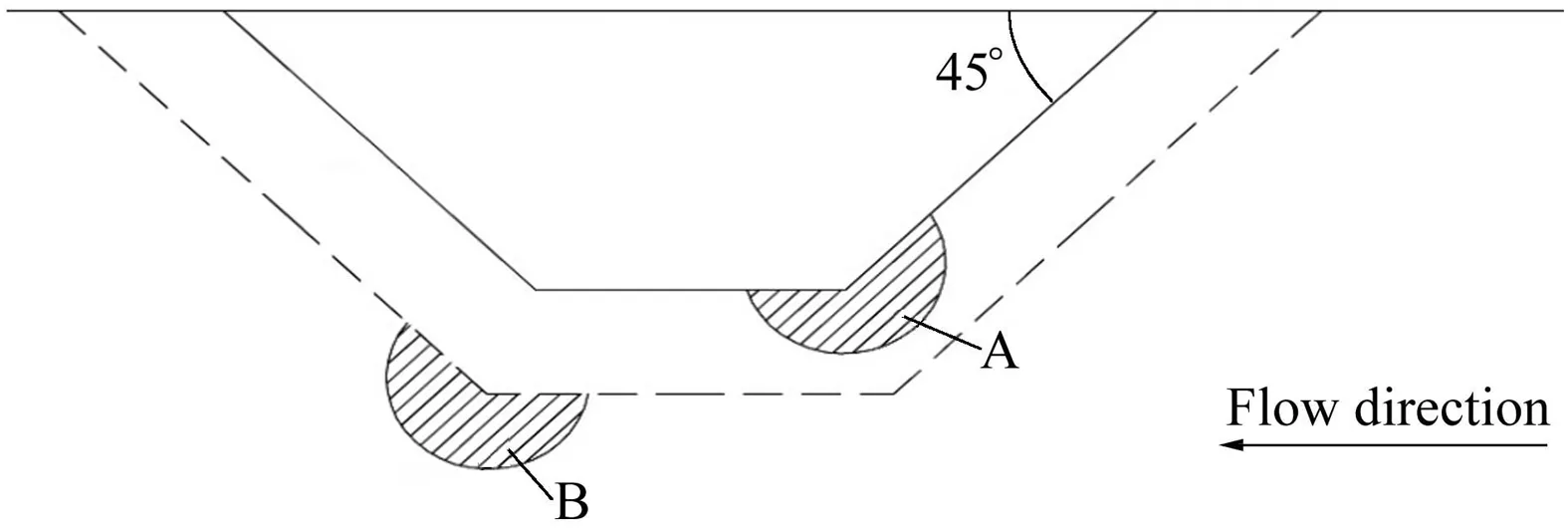
Fig.4.Onset of scour development around abutment with and without collar.
The scour hole emerged in region A in experiments without a collar and in region B in experiments with a collar(Fig.4).Without a collar,the bed materials eroded on the front side of the abutment flowed downstream and formed the ripples.Migration of ripples downstream accelerated the sediment transport process due to the presence of wake vortices in front of the abutment and also around it.The deeper the scour hole became,the more it developed on the upstream and downstream sides of the abutment.This observation accords with the results of Oliveto and Hager(2002).The development rate of the scour depth was initially high so that 70%of the maximum scour depth took place in less than 2 h for the tests without collars.However,the scour rate gradually declined.
3.1.Temporal scour development without collar
In this study,the definition of the equilibrium time of scouring by Coleman et al.(2003)was used.Since the abutment length was always less than the flow depth,the equilibrium time was defined as the time at which the scour rate decreased to less than 5%of the shortest abutment length(6 cm),i.e.,3 mm,in a successive 24-h period.Fig.5 demonstrates that 90%of the maximum scour depth occurred in less than 10 h(600 min).The tests continued up to a couple days(maximum seven days)to ensure that the scour rate was less than 3 mm in the successive 24-h period.
Applying larger abutments,it was observed that the intensity of vortices,turbulence,and scour depth around the abutment increased.Fig.6 illustrates the temporal scour development for different abutment lengths without using a collar as compared to the results of Ballio and Orsi(2001)and Coleman et al.(2003).
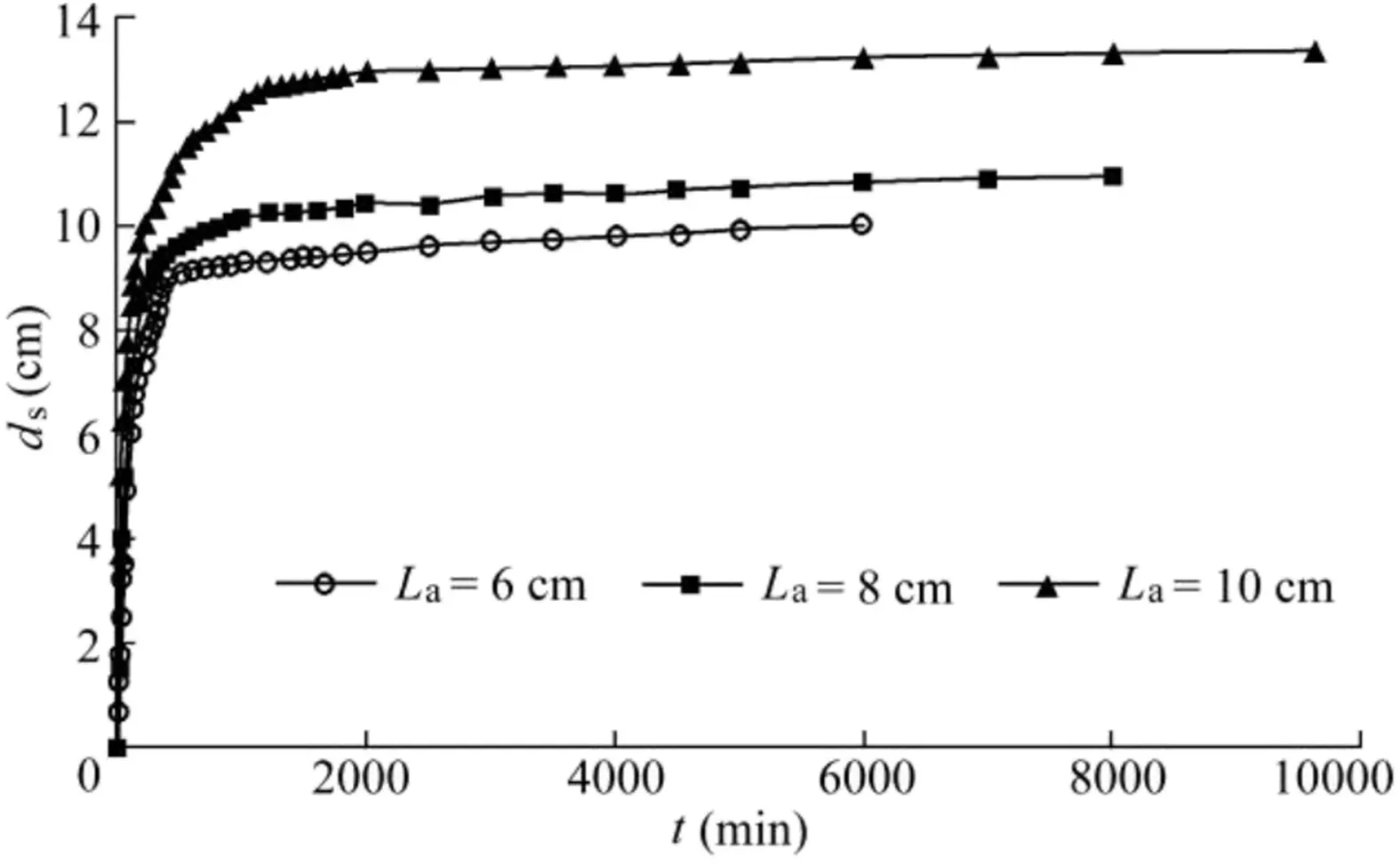
Fig.5.Temporal scour development without collar for various abutment lengths.
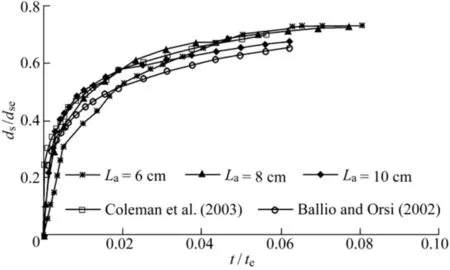
Fig.6.Dimensionless scour depth without collar and comparison with previous studies.
According to Fig.6,the scour rate was high at the beginning of the tests,but declined significantly as the scour depth increased with time.Moreover,when no collar was used,the temporal scour development agreed with that in Coleman et al.(2003),but the results of Ballio and Orsi(2001)underestimated the dimensionless scour depth.
3.2.Experiments with trapezoidal collar
After the onset of scouring in region B(Fig.4)in the experiments using a collar,some grooves appeared at the edges of the collar and expanded upstream and downstream.A review of previous studies(Ettema,1980;Singh et al.,2001;Alabi,2006;Kumcu et al.,2014)shows that collars installed near the bed level are more effective than those installed at higher elevations,because the space between the collar and the bed causes horseshoe vortices in front of the abutment or pier and results in lower efficiency of the collar.Accordingly,it is assumed that the time required for grooves to reach the abutment is a function of both the distance from the collar to the bed level and the collar width.In other words,when a collar is placed at a higher elevation,the space between the collar and the bed can be considered a portion of the scour depth,which can be easily washed.When a collar rests under the bed surface,the sediment particles on the collar surface are washed out first,and therefore,the scouring around the abutment or pier is postponed.Consequently,it is desirable that the collar be located only a small distance below the bed level(Ettema,1980;Dargahi,1990b;Kayaturk,2005;Kumcu et al.,2014).
3.3.Temporal scour development with application of trapezoidal collar
Fig.7 demonstrates the temporal scour development around the abutment with different collar widths as compared to the results of experiments without collars.It was observed that the largestds/Lavalues were obtained when no collar was used,but when a collar was used,there was a delay before the scouring emerged.

Fig.7.Temporal scour development at abutment with and without collar.
After 600 min from the beginning of experiments,when the collar widths ofBc=2 cm andBc=8 cm were applied,with an abutment length ofLa=6 cm,theds/Laratios equaled 1.2 and 1,respectively(Fig.7(a)).Compared to the test without collars,the increase of the collar width to 2 cm and 8 cm(four times greater)decreased theds/Laratios by 18.7%and 37.5%,respectively,however,applying collar widths of 2 cm and 8 cm to other abutment lengths,theds/Laratios decreased by 12.5%and 37.5%,respectively(Fig.7(b)and(c)).Considering the greater difference betweends/Laratios ofBc=2 cm andBc=8 cm for shorterLavalues,it is concluded that collars show better performance for shorter abutments.
Generally,in experiments without collars,the increase of abutment length from the average value(8 cm in the current study)to the maximum value(10 cm in the current study)resulted in the sameds/Laratio(ds/La=1.2)a long time from the beginning of the experiments(Fig.7(b)and(c)).This result was also observed in experiments with a maximum collar width(8 cm in the current study)but with a smallerds/Laratio(ds/La=0.8).
Moreover,similar scour depths were obtained more than 10 h from the beginning of the tests for collar widths of 2 and 4 cm.However,a collar width of 4 cm caused a greater delay of scour emergence,compared to a collar width of 2 cm.The delay of scour occurrence with the increase ofBc,due to the protective role of the collar against scour development at elevations lower than the collar,is shown in Fig.7.
After a long period,the scour development continued at the same rate as it did without a collar.The scour development stopped when the vortices inside the scour hole were unable to carry the bed particles,and the scour depth remained constant,whereas the width and length of the scour hole continued to grow when the vortices could move the particles and the scour depth increased again.
Fig.8 shows the simultaneous effects of abutment length and collar width on the scour onset,wheretsis the lag time before the scouring occurs.According to the results,forLa/Bc>2,the scouring occurred up to 80 min after the start of the experiments,whereas forLa/Bc<1,the scouring was not observed before 200 min.
3.4.Effect of collar width on maximum scour depth
The collar width is an important parameter that affects the scour depth.Kayaturk(2005)defined θ as the collar surface index as follows:

whereAtis the total area occupied by the collar and abutment,andAais the area of the abutment.

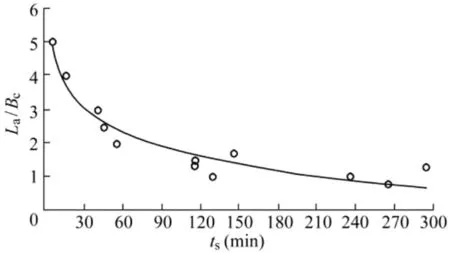
Fig.8.Simultaneous effects of Laand Bcon delay of scour emergence.
The performance of collars with regard to the scour reduction rate(r)at the abutment was evaluated using the following equation:wheredsmaxandd′smaxare the maximum scour depths with and without collars,respectively.Fig.9 shows that a greater area of the surface covered by the abutment and collar causes a greater scour reduction rate,but the results presented by Kayaturk(2005)for vertical-wall abutments overestimate the scour reduction rate.Since the scouring around vertical-wall abutments is greater than it is around wing-wall abutments,the performance of collars with regard to the scour reduction rate around vertical-wall abutments is perceived to be better than it is around wing-wall abutments.Therefore,the scour reduction rate curve determined by Kayaturk(2005)is steeper than that of the current study(Fig.9).
Fig.10 illustrates the maximum scour depth against λ with λ= θLa/Bc,and shows the simultaneous effects of the abutment length and collar width on scour development.It is clear that higher λ values lead to an increase in the scour depth,which implies a greater effect of the abutment length on the scour depth compared to the collar width.This observation agrees with Kayaturk(2005).
Fig.11 demonstrates the effect ofLa/Bcon the scour reduction rate.The highest and lowest scour reduction rates were 37%and 9%forLa/Bc=0.75 andLa/Bc=5,respectively.A higherLa/Bcratio means either an increased abutment length or a decreased collar width.In other words,the increased θ value reduced the scour depth.
Despite some similarities between the obtained results and those presented by Kayaturk(2005),there is some discrepancy that may be caused by the shorter duration of the tests by Kayaturk(2005).The results of the current study,shown in Fig.11,were studied statistically with R software to find the optimized fitted curve.Eq.(7)was derived as an exponential relationship:
点的问题解决了,但新的思考也浮出了水面——解决了某一道题、某一类题就行了吗?我认为是不够的!因为只停留在一个具体的点的突破上,其他原理相通的板块可能会因为缺少了点动成线的融会贯通而处于低效的被动学习状态。

Fig.9.Effect of θ on scour reduction rate.
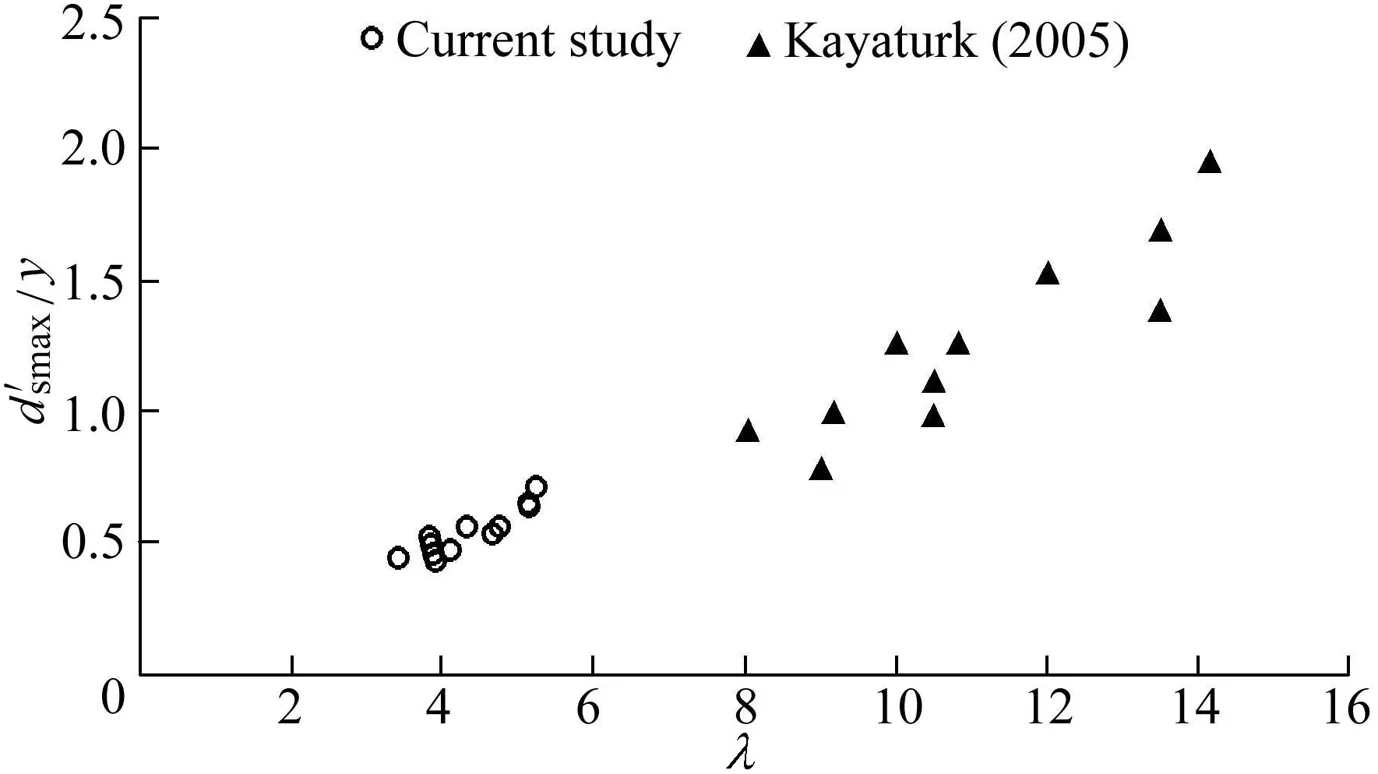
Fig.10.Simultaneous effects of Laand Bcon maximum scour depth.
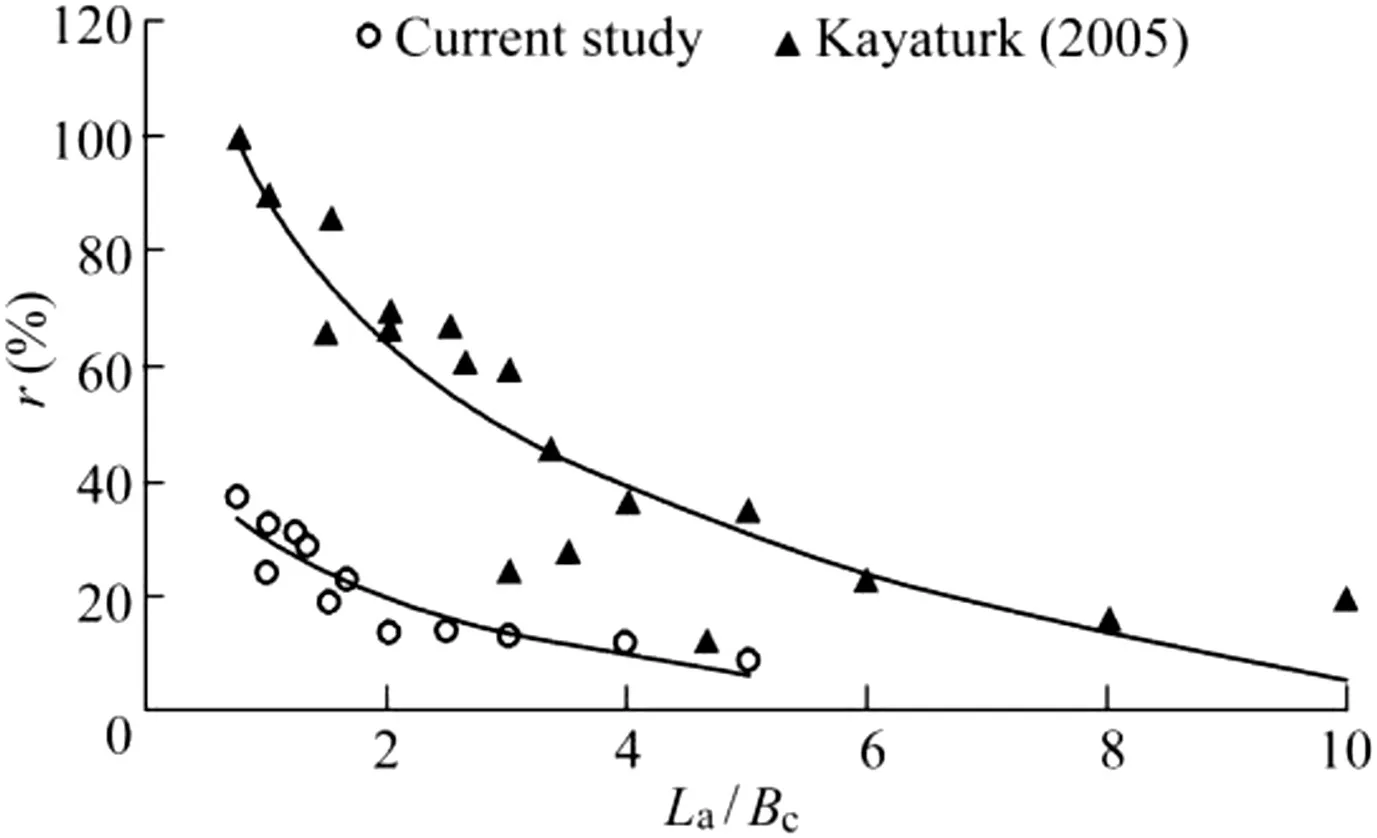
Fig.11.Effect of La/Bcon scour reduction rate.

whereR2is the coefficient of determination.
Eq.(7)is similar to Eq.(8)presented by Kumcu et al.(2014) for vertical-walla but ments but with different coefficients.

3.5.Effect of collar width on size of scour hole
Fig.12 shows the effect of collar width on the upstream length of the scour hole.It can be seen that a greaterBc/Laratio causes a significant increase of thea/Laratio.
The collar not only postpones the scour development and reduces the scour depth but also causes the extension of the hole along the upstream side.It is also evident that an increase of the collar width leads to the formation of grooves at greater distances from the abutment.
Fig.13 displays the variations ofc/LaversusBc/La.It is observed that the increase of collar width can broaden the scour hole,which is more significant in the case of a 6 cm-long abutment.Meanwhile,the curves are less inclined in the cases of 8 cm-and 10 cm-long abutments,which can be attributed to the differences of velocity distribution in the flume.
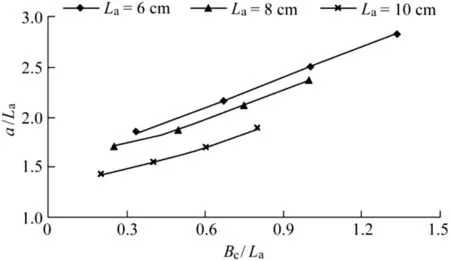
Fig.12.Dimensionless upstream length of scour hole against Bc/La.
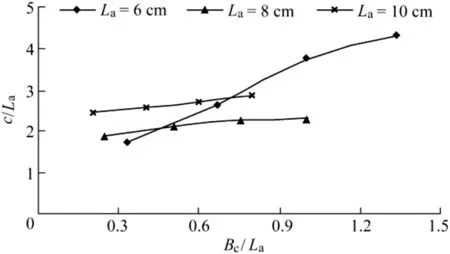
Fig.13.Dimensionless width of scour hole against Bc/La.
In other words,the increased abutment length makes the abutment cape closer to the center of the flume,where the velocity is high.This can nullify the vortices so that the dimensionless width of the scour hole decreases negligibly.
4.Conclusions
In this study,a series of experiments was carried out on the physical model of the scour development around a wing-wall abutment in a flume with and without a trapezoidal collar.For different ranges of Reynolds and Froude numbers,the following results were obtained:
(1)When no collar was used,the rate of scour development was high at the beginning of the tests but gradually declined as the scour hole developed.About 70%of the total scour depth occurred in less than 2 h.On the other hand,when a collar was used,scouring occurred up to 80 min in the experiments forLa/Bc>2,whereas scouring was not observed for up to 200 min forLa/Bc<1.
(2)Using a collar in the experiments led to shallower scour depths compared to those observed with no collar,but the upstream length and the width of the scour hole increased and,with a collar,sediment deposition was observed downstream of abutments.
(3)The collar width plays a significant role in reducing the scour depth.BetweenLa/Bc=0.75 andLa/Bc=5,the scour reduction rate varied from 37%to 9%.In addition,the increased θ value reduced the scour depth and increased the scour reduction rate.
(4)It is generally concluded that an increased collar width leads to a better performance for shorter abutments(for smallerLavalues).Additionally,for a given abutment length,the increased collar width delays the start of scour development.
(5)The relationship between the scour reduction rate andLa/Bcin the present study followed an exponential trend.It is similar to that proposed by Kumcu et al.(2014)for verticalwall abutments.
Acknowledgements
We express our gratitude to the University of Tabriz in Iran for providing the laboratory equipment and a comfortable atmosphere for conducting the present research.
References
Alabi,P.D.,2006.Time Development of Local Scour at Bridge Pier Fitted with a Collar.M.E.Dissertation.University of Saskatchewan,Saskatchewan.
Alem,Z.,Ghomeshi,M.,Mohammadi,S.,2012.Experimental study on the effects of collar's elevation and roughness on the reduction of scour of rectangular bridge abutment.Arch.Des Sci.65(8),370-383.
Ballio,F.,Orsi,E.,2001.Time evolution of scour around bridge abutments.Water Eng.Res.2(4),243-259.
Barbhuiya,A.K.,Dey,S.,2004.Local scour at abutments:A review.Sadhana 29(5),449-476.
Chiew,Y.M.,1992.Scour protection at bridge piers.J.Hydraul.Eng.118(9),1260-1269.https://doi.org/10.1061/(ASCE)0733-9429(1992)118:9(1260).
Coleman,S.E.,Lauchlan,C.S.,Melville,B.W.,2003.Clear-water scour development at bridge abutments.J.Hydraul.Res.41(5),521-531.https://doi.org/10.1080/00221680309499997.
Dargahi,B.,1990a.Flow Field and Local Scouring Around a Cylinder,Bulletin Nr.TRITA-VBI-137.The Royal Institute of Technology,Stockholm.
Dargahi,B.,1990b.Controlling mechanism of local scouring.J.Hydraul.Eng.116(10),1197-1214.https://doi.org/10.1061/(ASCE)0733-9429(1990)116:10(1197).
Dey,S.,Bose,S.K.,Sastry,G.L.N.,1995.Clearwater scour at circular piers:A model.J.Hydraul.Eng.121(12),869-876.https://doi.org/10.1061/(ASCE)0733-9429(1995)121:12(869).
Dongol,D.M.S.,1994.Local Scour at Bridge Abutments.University of Auckland,Auckland.
Ettema,R.,1980.Scour at Bridge Piers.Ph.D.Dissertation.University of Auckland,Auckland.
Ghazvinei, P.T., Darvishi, H.H., Arrifin, J., Jahromi, S.H.M.,Aghamohammadi,N.,Amini,A.,2017.MTP validation analysis of scour formulae in an integral abutment bridge.KSCE Journal of Civil Engineering 21(3),1009-1021.https://doi.org/10.1007/s12205-016-0181-6.
Gogus,M.,Dogan,A.E.,2010.Effect of collars on scour reduction at bridge abutments.In:Proceedings of the 5th International Conference on Scour and Erosion.ASCE,San Franciso.https://doi.org/10.1061/41147(392)100.
Heidarpour,M.,Afzalimehr,H.,Izadnia,E.,2010.Reduction of local scour around bridge pier groups using collars.Int.J.Sediment Res.25(4),411-422.https://doi.org/10.1016/S1001-6279(11)60008-5.
Izadnia,E.,Heidarpour,M.,2012.Simultaneous use of cable and collar to prevent local scouring around bridge pier.Int.J.Sediment Res.27(3),394-401.https://doi.org/10.1016/S1001-6279(12)60044-4.
Kayaturk,S.Y.,2005.Scour and Scour Protection at Bridge Abutment.Ph.D.Dissertation.Middle East Technical University,Ankara.
Kumar,V.,Raju,K.G.R.,Vittal,N.,1999.Reduction of local scour around bridge piers using slots and collars.J.Hydraul.Eng.125(12),1302-1305.https://doi.org/10.1061/(ASCE)0733-9429(1999)125:12(1302).
Kumcu,S.Y.,G¨ogu¨s,M.,Kokpinar,M.A.,2007.Temporal scour development at bridge abutments with a collar.Can.J.Civ.Eng.34(4),549-556.https://doi.org/10.1139/l06-146.
Kumcu,S.Y.,Kokpinar,M.A.,G¨ogu¨s,M.,2014.Scour protection around vertical-wall bridge abutments with collars.KSCE J.Civ.Eng.18(6),1884-1895.https://doi.org/10.1007/s12205-014-0245-4.
Li,H.,Barkdoll,B.,Kuhnle,R.,2005.Bridge abutment collar as a scour countermeasure.In:Proceedings of World Water and Environmental Resources Congress.ASCE.
Mashahir,M.B.,Zarrati,A.R.,2002.Effect of collar on time development of scouring around rectangular bridge piers.In:Proceeding of the 5th International Conference on Hydroscience and Engineering.Warsaw.
Mashahir,M.B.,Zarrati,A.R.,Rezayi,A.R.,2004.Time development of scouring around a bridge pier protected by collar.In:Proceedings of the 2nd International Conference on Scour and Erosion.
Masjedi,A.,Bejestan,M.S.,Esfandi,A.,2010.Experimental study on local scour around single oblong pier fitted with a collar in a 180-degree flume bend.Int.J.Sediment Res.25(3),304-312.https://doi.org/10.1016/S1001-6279(10)60047-9.
Melville,B.W.,1992.Local scour at bridge abutments.J.Hydraul.Eng.118(4),615-631.https://doi.org/10.1061/(ASCE)0733-9429(1992)118:4(615).
Mohammadpour,R.,Ghani,A.A.,Vakili,M.,Sabzevari,T.,2016.Prediction of temporal scour hazard at bridge abutment.Nat.Hazards 80(3),1891-1911.https://doi.org/10.1007/s11069-015-2044-8.
Oliveto,G.,Hager,W.H.,2002.Temporal evolution of clear-water pier and abutments scour.J.Hydraul.Eng.128(9),811-820.https://doi.org/10.1061/(ASCE)0733-9429(2002)128:9(811).
Raudkivi,A.J.,1990.Loose Boundary Hydraulics,third ed.Pergamon Press,New York.
Singh,C.P.,Setia,B.,Verma,D.V.S.,2001.Collar-sleeve combination as a scour protection device around a circular pier.In:Proceedings of 29th Congress on Hydraulics of Rivers,Water Works and Machinery.Chinese Hydraulic Engineering Society,Beijing.
Wu,P.,Hirsh field,F.,Sui,J.Y.,2015.Local scour around bridge abutment under ice covered condition an experimental study.Int.J.Sediment Res.30(1),39-47.https://doi.org/10.1016/S1001-6279(15)60004-X.
Yilmaz,K.,2014.Application of Collars as a Scour Countermeasure for Spillthrough Abutments.M.E.Dissertation.Middle East Technical University,Ankara.
Zhai,Y.,2010.Time-dependent Scour Depth under Bridge-submerged Flow.M.E.Dissertation.University of Nebraska-Lincoln,Lincoln.
 Water Science and Engineering2018年1期
Water Science and Engineering2018年1期
- Water Science and Engineering的其它文章
- Understanding groundwater table using a statistical model
- Application of a water quality model for determining instream aeration station location and operational rules:A case study
- Influence of pH on short-cut denitrifying phosphorus removal
- Numerical investigation of pollution transport and environmental improvement measures in a tidal bay based on a Lagrangian particle-tracking model
- Effects of elevated atmospheric CO2and nitrogen fertilization on nitrogen cycling in experimental riparian wetlands
- A simplified physically-based breach model for a high concrete-faced rock fill dam:A case study
